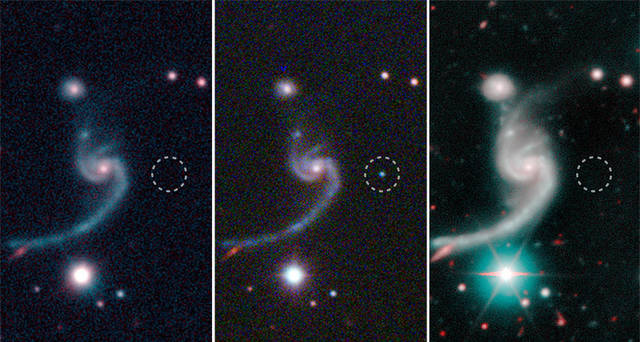KAILUA-KONA — The W.M. Keck Observatory on Maunakea assisted a team of Caltech-led researches in observing the peculiar death of a massive star that exploded in a surprisingly faint and rapidly fading supernova.
The observations suggest the star had an unseen companion whose gravity siphoned away from the star’s mass to leave behind a stripped star that exploded in a quick supernova, according to Caltech.
The explosion is thought to have resulted in a dead neutron star orbiting around its companion, suggesting scientists, for the first time, witnessed the birth of a compact neutron star binary system.
The research was led by graduate student Kishalay De and is described in a paper appearing in the Oct. 12 issue of the journal Science.
When a massive star — at least eight times the mass of the sun — runs out of fuel to burn in its core, the core collapses upon itself and then rebounds in a powerful explosion called a supernova. After the explosion, all of the star’s outer layers have been blasted away, leaving behind a dense neutron star — about the size of a small city but containing more mass than the sun, according to Caltech.
Normally, during a supernova event, the dying star blasts away all of the material in its outer layers, which usually equates to a few times the mass of the sun. However, Caltech said the event, dubbed iPTF 14gqr, ejected matter only one-fifth of the mass of the sun.
“We call this an ultra-stripped envelope supernova and it has long been predicted that they exist,” said Caltech assistant professor of astronomy Mansi Kasliwal, who is the principal investigator of the Caltech-led Global Relay of Observatories Watching Transients Happen project. “This is the first time we have convincingly seen core collapse of a massive star that is so devoid of matter.”
Researchers inferred that the star must have some kind of dense, compact companion, either a white dwarf, neutron star or black hole, close enough to siphon away its mass before it exploded. The neutron star that was left behind from the supernova must have then been born into orbit with that dense companion.
Because this new neutron star and its companion are so close together, they eventually will merge, producing gravitational waves and electromagnetic waves similar to a collision that occurred in 2017, the researchers predicted.
The event was first seen by California’s Palomar Observatory. The observatory kept tabs on iPTF 14gqr during the first hours after it exploded, and as the Earth rotated, astronomers around the world collaborated to monitor iPTF 14gqr, including Keck Observatory.
Researchers used Keck I’s Low Resolution Imaging Spectrograph to characterize the astrophysical nature of the event, providing important clues about the type of supernova that was observed, as well as its environment, specifically iPTF 14gqr’s host galaxy and the galaxy group. Also used was the DEep Imaging and Multi-Object Spectrograph on Keck II for follow-up spectroscopy of the supernova as it was fading.



